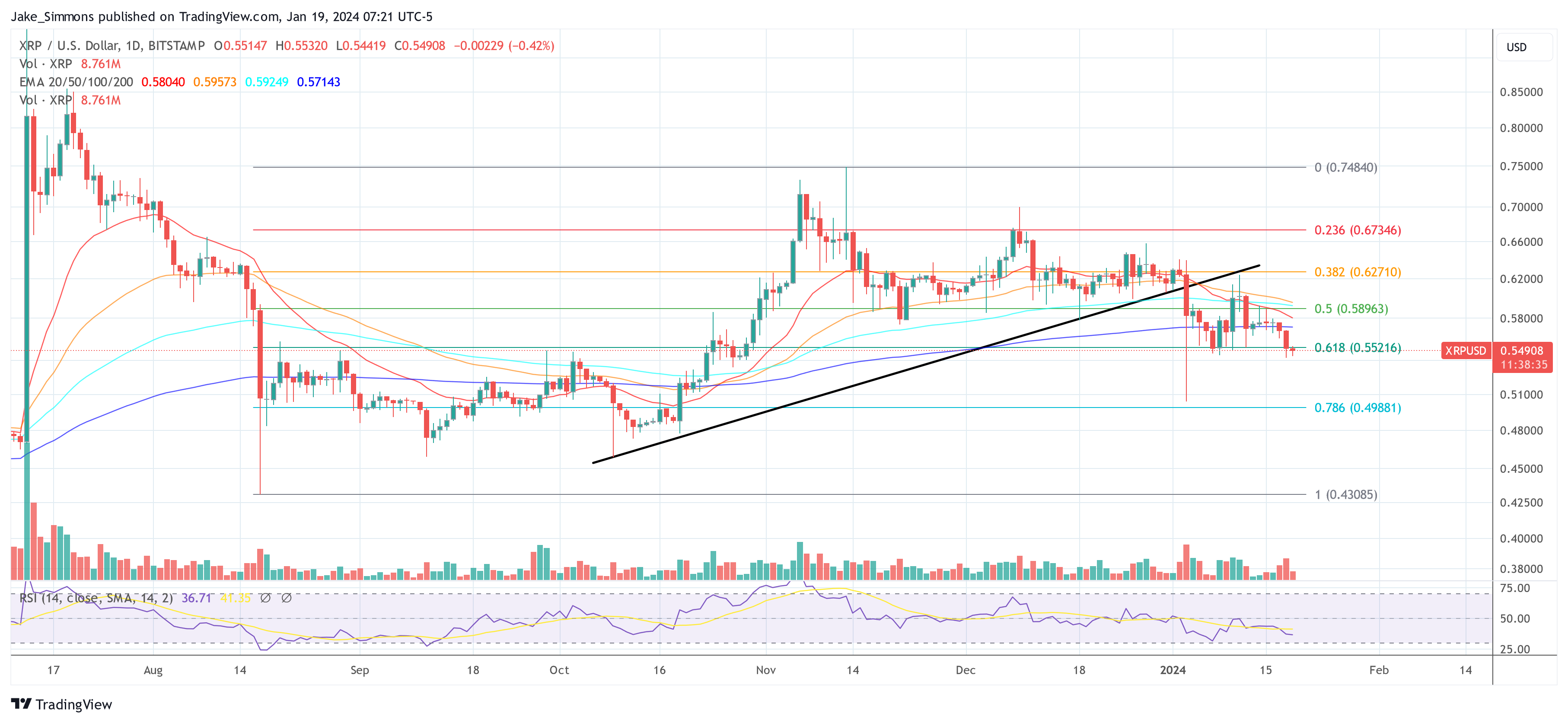The price dynamics of XRP, compared to its more dominant counterparts, Bitcoin (BTC) and Ethereum (ETH), have been the subject of intense research and debate. Pro-XRP advocate Bill Morgan recently shed light on this baffling trend through a detailed report conversation on X (formerly Twitter), which sparked a wide range of reactions and theories from the community.
Reflecting on XRP’s long-term performance, Morgan pointed out a noticeable trend: assets. it doesn’t matter what Ripple does.”
He highlighted a significant drop in XRP against BTC (84.85%) and ETH (91.58%) over the past five years. Morgan initially attributed this trend to the lawsuit against Ripple, noting that even subsequent legal victories and clarity for XRP in the second half of 2023 failed to reverse the downward trend, leaving the community to question the underlying causes.
XRP significantly underperforms BTC, ETH: Why?
The discourse continued to unfold in the comments section, where several users presented their hypotheses. One user labeled XRP as “the most hated coin in crypto,” suggesting that persistent negative sentiment, combined with aggressive shorting and attacks, has been damaging to XRP’s value. Morgan agreed and acknowledged the impact of the “FUD story,” but questioned whether it was the primary cause.
The discussion delved into other potential factors, including “tribalism” in the crypto space, the lack of speculative media attention surrounding XRP, and the influence of major holders of BTC and ETH on the XRP price. Morgan called these collective factors the “narrative explanation,” acknowledging their role but still unconvinced that they were the central issue.
“I call that the narrative explanation and I believe it contributes to XRP’s price performance versus BTC and ETH. I don’t think this is the most important explanation. The FUD saga against XRP is intense and ongoing. It even contained absolute nonsense about the SEC v Ripple case,” Morgan said declared.
There was sharp criticism of developer activity on the XRPL (XRP Ledger), with one user highlighting a lack of development as a key concern. Morgan agreed and flagged the inactivity as a problem. “Lack of developer activity is definitely a problem,” the attorney noted.
However, he firmly rejected the idea that Ripple’s monthly release of 200 million coins from escrow is a factor, stating: “The escrow argument is easily dismantled.” He also refuted the argument about XRP’s usefulness, or lack thereof, by presenting evidence of its use in 50% of Ripple’s ODL (On-Demand Liquidity) transactions.
Competition And Propaganda
The role of stablecoins such as USDT and USDC in cross-border payments and money transfers, an area in which XRP aims to excel, was also discussed. Morgan admitted that the increased competition in this particular area could indicate a broader problem: the lack of development of other applications for XRP on the XRPL.
Yassin Mobarak, founder of Dizer Capital, offers a broader perspective, pointing to the “propaganda against XRP” as a major deterrent to its appreciation.
He argued:
Frankly, given the unfortunate successful propaganda against XRP in the crypto community, we should not look to existing retail investors for an increase in the XRP price. That will probably never happen. XRP will only grow due to demand from utilities, institutional users and investors, and new retail entrants untainted by the historical propaganda.
As the conversation unfolds, it becomes clear that the factors influencing XRP price dynamics are multi-faceted and complex. However, one thing is clear: if the supply side can be ruled out as a problem (Ripple escrow), it is the demand side that is missing.
At the time of writing, XRP was trading at $0.54908 and is down 2.5% over the past 24 hours, in line with the broader market.

Featured image from Shutterstock, chart from TradingView.com
Disclaimer: The article is for educational purposes only. It does not represent NewsBTC’s views on buying, selling or holding investments and of course investing involves risks. You are advised to conduct your own research before making any investment decisions. Use the information on this website entirely at your own risk.

